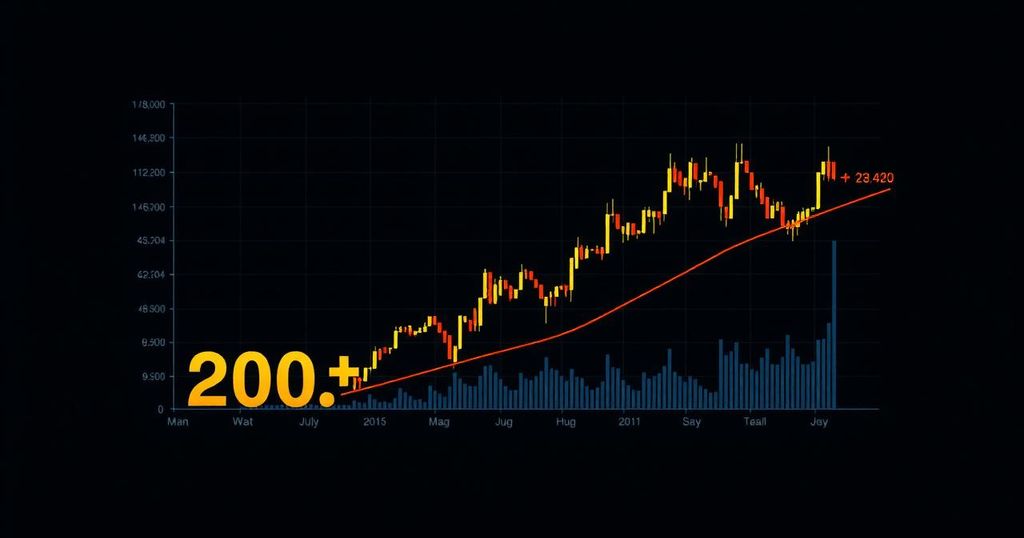Bitcoin’s 200-Day Average Nears Cessation of Bullish Momentum Ahead of Job Data Release
Bitcoin’s long-term bullish momentum is on the verge of weakening, as indicated by its 200-day simple moving average (SMA), which has begun to show signs of stall speed for the first time since October. This crucial average, often referenced as a key indicator of Bitcoin’s price trend, has reported trivial daily increases averaging less than $50 since late August, a stark contrast to the more vigorous movements exceeding $200 observed earlier this year.
As of the latest readings, Bitcoin’s 200-day SMA is approximately $63,840, while the current spot price stands at $55,880. The diminishing variability in the SMA raises concerns that a bearish trend shift could be imminent. Indeed, shorter-term moving averages, specifically the 50-day and 100-day SMAs, have recently exhibited declines after peaking, culminating in a bearish crossover as the 100-day SMA fell below the 200-day SMA.
Market analysts note a growing caution among investors in response to increasing macroeconomic uncertainty, with some commentators suggesting a potential global recession. The LondonCryptoClub newsletter emphasized the prevailing market conditions as “pretty ugly,” while also hinting that any final decline in Bitcoin’s price may set the stage for a subsequent rally.
Senior market analyst Alex Kuptsikevish of The FxPro highlighted the negative sentiment in broader financial markets, stating that investor anxiety persists despite a weaker dollar. He pointed out a crucial technical support level for Bitcoin at just over $54,000, while cautioning that significant volatility could drive prices below $53,000. Furthermore, critical support has been identified around the $50,000 mark, particularly characterized by a trendline formed by recent corrective lows.
Several market figures, including Arthur Hayes, co-founder and former CEO of the crypto exchange BitMEX, have expressed expectations for Bitcoin’s price to potentially decline to the $50,000 level. Such sentiments are echoed in Hayes’ recent communication on social media, where he suggested a targeted move below $50,000 during the weekend.
Traders are advised to remain vigilant, especially as the forthcoming U.S. nonfarm payrolls (NFP) report is anticipated to influence market volatility. The report is projected to reveal a job increase of approximately 160,000 and a drop in the unemployment rate to 4.2%, which could further affect the Federal Reserve’s interest-rate strategies. A lackluster jobs report might intensify recession fears and heighten expectations for a 50 basis point rate cut, potentially stabilizing Bitcoin and other risk assets. However, traders are urged to be mindful of potential growth scare scenarios akin to those experienced in August, as previously discussed.
In conclusion, while immediate trends suggest a potential decline in Bitcoin’s price, external economic factors and upcoming data releases could dramatically influence market dynamics, necessitating a keen watch on developing circumstances.








Post Comment